
Science of Cambridge was the company formed by Clive Sinclair along with
Chris Curry waaaay before the ZX80 and Sinclair Research were even twinkles. Uncle Clive at this point
had been producing quality electronic test gear and the world's smallest transistor radio, along
wih some well received audio equipment. A chap by the name of Ian Williamson
approached Clive and Chris with the idea of a kit micro based on a National Semiconductor SC/MP
processor, the INS8060. The MK14 was released as a kit in 1977 and cost £39.95. Like other kit micros
of the day it featured a hex keypad and an 8 digit calculator display. It was powered by a 12V supply
that was reduced to 5V by a 7805 regulator.
Various add-on boards were produced, at least 2 by one Nick Toop
who came up with the cassette interface and VDU board before going onto the nascent Acorn with Chris
Curry and Hermann Hauser to introduce the Acorn System One. Nick ended up designing the Atom.
This machine was given to me by a splendid chap called Paul Smith, and it's
the only micro I've ever received that came in a cassette storage case. I'm ashamed that it's taken
me until 2022 to put up pics of the machine. Paul, I hope you're still out there. Thanks!
See the Adverts page for a couple of excellent
scans of the first two adverts for the machine, including Nick's VDU board and cassette interface.
Pictures
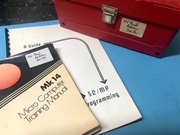 | 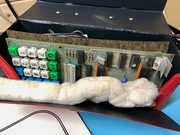 | 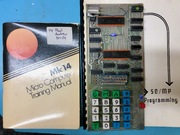 | 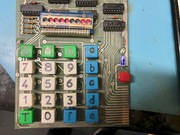 |
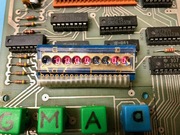 | 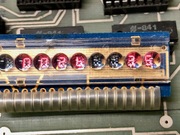 |  |  |